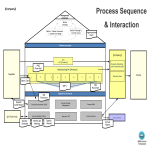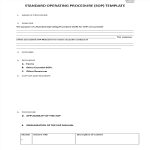Kwaliteit Incident Dossier Sample

Opslaan, invullen, afdrukken, klaar!
De beste manier om een Kwaliteit Incident Dossier Sample te maken? Check direct dit professionele Kwaliteit Incident Dossier Sample template!
Beschikbare bestandsformaten:
.doc- Gevalideerd door een professional
- 100% aanpasbaar
- Taal: English
- Digitale download (39 kB)
- Na betaling ontvangt u direct de download link
- We raden aan dit bestand op uw computer te downloaden.
Zakelijk rapport kwaliteitsmanagement Kwaliteit Divisie Incident rapport sjabloon Word Incidentmeldingsjablonen In elementen van kwaliteitsborging Total Kwaliteitsmanagement
Would you like a template for a quality incident report? An incident report needs to be well written. A sample that you can download and modify according to the requirements of your organization is available. This can serve as a complete guide in the completion and submission of your report.
Any deviation from standard operations, quality norms, or regulatory frameworks in a business or industrial process can be formally recorded and analyzed using a quality incident report. The purpose of this document is to find the main source of the event, provide solutions for it as well as prevent similar happenings in the future.
What are an incident report’s attributes?
To ensure it is comprehensive, clear, and useful for addressing and preventing future incidents, an effective incident report in the context of quality management should have several key qualities. Here are the main qualities of an effective incident report.
- Accuracy
- Precise Information: Dates, times, and involved parties must be included in the report with all necessary accurate details.
- Factual: Only facts should be included in this document; avoid any speculation or assumptions.
- Clarity
- Clear Language: Use simple language that is easy to understand when describing the accident.
- Concise: All essential information must be provided without being too wordy or verbose.
- Full Disclosure
- Full Range of Relevant Information: This paper should include everything that pertains to the incident, including who did what, when it happened, where it occurred, and how it occurred.
- Another thing is that it also has a description of the incident followed by root cause analysis as well as corrective and preventive actions.
- Objectivity
- Emotionless Style: The report should maintain some neutrality.
- Don’t Blame Anyone: Instead of pointing fingers at whoever played a role in causing the problem, let us strive to be different from now on.
- Timeliness
- Rapid Reporting: Making any move after an incident has happened can only be done effectively when we write down what has happened immediately after it has happened.
- Moreover, ensure that there are plans indicating corrective measures to be taken after the report is released.
- Structuring Format
- Coherent Segments: Outlining different components of a report is critical for clear-cut writing by making use of a relevant framework.
- Uniform Design: This makes reading and referencing easy for the audience.
- Root Cause Analysis
- Thorough Investigation: The analysis has to be detailed because we want to know why it happened in the first place.
- Analytical Tools: For example, 5 Whys, and Fishbone Diagram can be used as supportive tools to do the analysis.
- Cooperative and Avoidance Initiatives
- Action Strategy: To rectify the current concern lucidly offer effective and preventive steps.
- Responsibility along with time frame: Ascribe duty for carrying out actions and incorporate a schedule for concluding them.
- Validation and Tracking
- Effectiveness Check: Specify techniques of confirming whether or not corrective as well as preventive steps have worked.
- Scheduled Follow-Up: Incorporate scheduled dates meant for checking up on by regularity and advancement.
- Confidentiality
- Sensitive Information: Be careful handling sensitive information while ensuring that only authorized people receive the report.
- Privacy: A void disclosing excess personal details concerning individuals involved.
The following template can be downloaded now. In the same way, you can open it directly online by using the "Open with Google Docs" button. Once you are satisfied with your adjustments, do remember to save the template.
DISCLAIMER
Hoewel all content met de grootste zorg is gecreërd, kan niets op deze pagina direct worden aangenomen als juridisch advies, noch is er een advocaat-client relatie van toepassing.
Laat een antwoord achter. Als u nog vragen of opmerkingen hebt, kunt u deze hieronder plaatsen.



